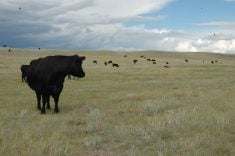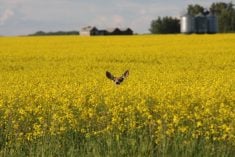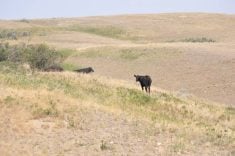One of Alberta’s oldest cattle marketing facilities has closed its doors after 89 years in business.
Edmonton Stockyards, originally built in 1916, closed its doors and stopped cattle sales May 27, said general manager Ken Danard.
Like other markets across the country, the number of cattle coming through the market dropped after BSE, but recently numbers had started to rebound. It wasn’t enough to keep the market open, said Danard, who was told by the Nilsson Brothers owners that it was economics that closed the facility. The site is on about 23 acres of land in an industrial area in northeastern Edmonton.
Read Also

India slaps 30 per cent import duty on yellow peas
India has imposed a 30 per cent duty on yellow pea imports with a bill of lading date on or after Nov. 1, 2025.
Location denied
About three months ago the city rejected a bid by Edmonton Stockyards to build northeast of Edmonton near Gibbons.
The existing central Edmonton location was in desperate need of a facelift.
“It was old, it was tired. A new facility is what we needed,” said Danard, who added many producers were disappointed with the closure of the market.
The cattle producers who brought their cattle to Edmonton Stockyards followed a family tradition. Most of their fathers and grandfathers also brought their cattle to the same market.
“They’re not happy to see it closed. There’s a lot of history there,” he said.
Mack Vars, who worked at the stockyards for 31 years, said it was always a good place to sell and buy cattle.
A notice on the Edmonton Stockyards website said: “Other opportunities to enhance the value of the ESI property have come forward that we wish to explore at this time. The strong economy in the Edmonton region, along with strong demand for serviced industrial property has accelerated the decision to move forward on the redevelopment of this property. We will be exploring alternative locations and viable business options of a replacement facility.”














